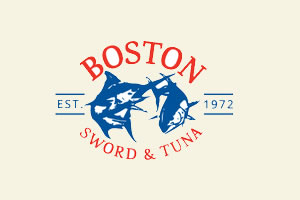

Dead Fish, Raw Cheese and Taxes
Next week is Tax Day and a not-so-friendly reminder that there are a few things we can always count on, whether we want to or not. The last blog advised to not be fooled by seasonal peaks or aberrations, because, like death and taxes, some natural cycles are reliably consistent.
As expected, the Wild Striped Bass did dry up as fishing slowed down. Though supply will get choppy over the next few weeks, Pacifico Striped Bass is a pristine product you can depend on for availability and quality year round. Fillets average 8 to 10 ounces and will offer extended shelf-life through the ups and downs of April’s erratic weather.
Mahi Mahi prices are trending up, but we have Pacific Yellowtail Jack coming into season that will be a solid performer. Over the next few weeks the Yellowtail Jack, also marketed as Wild Hiramasa, will be available as a terrific firm, white fleshed, alternative. The fish have white tablecloth cache with a friendly food cost and the versatile meat lends itself to a variety of applications, including searing, ceviche, and grilling.
We sometimes forget that our resources are natural and must be given a chance to replenish themselves. Therefore, be forewarned that the spawn is on for some East and West Coast species. Haddock, Cod, Sole, Rockfish, and Petrale are all experiencing the spawning season. This translates into softer, weaker flesh, and possible interruptions in supply. Factor in areas closed to fishing, and we could see disruptions last a few days. It is important to understand that this is all part of a natural cycle and we have to adjust our expectations with the season. Nature works to the tick of her own clock.
Speaking of the divine clock, the bell will toll for Wild Salmon very soon. We hope that this year’s Copper River Season isn’t the bust that it was last year, but at least by mid-May we will have a good idea of what’s going to happen. The May opener is right around the corner – and, with it, Wild Salmon season will get underway. The overall projections for Kings and Sockeyes are a tiny bit better this year from last and it looks like the Pink and Keta seasons will be more robust than last year’s harvest.
On the East Coast two major shellfish seasons are getting underway: Scallop season has kicked off with some average landings, and most of the meats are in the 10/20 size range. Large U10 meats will not be as plentiful this year as last, but the overall quota remains robust. Lobstermen are finally getting their shot to get out and fish, and we should start to see some downward movement on pricing if the weather holds up. We are still a far cry from the summer bust-out season. However, it is nice to see some relief from the winter season. Change is the surest thing found in Nature, and whether good or bad, it is unavoidably constant.
Gourmet Grab
High quality raw ingredients produce superior finished products, and you can’t make good food without good ingredients. Nowhere is this tenant tested and proved more so than in the production of Raw Milk Cheeses. April 20th is International Raw Milk Cheese Day. Raw milk cheeses are a complete food, containing proteins, carbohydrates, fats, vitamins, minerals, enzymes, cholesterol and beneficial bacteria, all valuable assets to the human body that get lost in the manufacturing of pasteurized cheeses. The even better news; you don’t have to search too far to get your hands on some.
- Alan and Barbara Glustoff operate 5 Spoke Creamery in Goshen, New York. There they tirelessly produce farmstead cheese by hand, utilizing milk sourced from their herd of grass-fed cows. Their animals are free to roam the paddocks, dining on a variety of grasses, herbs, flowers and weeds. The variated diet gives the milk, and subsequently the cheese, a depth of flavor and terroir that cannot be replicated anywhere else.
- In the Whitewater River Valley in southwest Indiana, Leslie Jacobs and Matthew Brichford of Jacob’s and Brichford operate a seasonal dairy that follows nature’s natural rhythms. They move their herds through fresh pastures daily, a migration that has been taking place since 1981. Using minimal inputs, they produce all-natural grass-fed milk cheeses from their herd of Jersey, Normande, and Tarentaise crossbred cows. Their hand-crafted cheeses are created with their own specially developed artisan recipes, resulting in award-winning products that are sure to delight to your taste buds.
- In the Driftless region of Southwest Wisconsin, Uplands Creamery and Dairy Farm is nestled atop Pleasant Ridge. Here is a swath of 300 acres of prairie that is ideally suited for supporting grazing animals, with a diversity of grasses, legumes and wildflowers. The closed herd consists of nine different types of cross-bred cows that are uniquely bred to thrive on the rolling hills. Each breed supplies milk that is different in fat, protein, mineral and vitamin levels, generating more complex flavors in the finished products. From May thru October when the cows are on pasture, their milk is used to produce America’s most awarded cheese, Pleasant Ridge Reserve.















